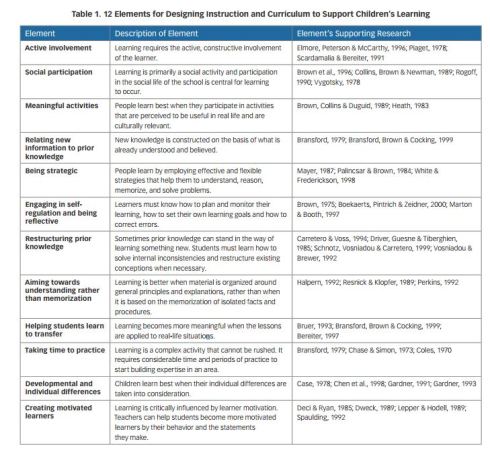Competency based education has several strengths over traditional seat-based education. It supports students’ accountability of their own learning and allows students to advance in their own pace after meeting the explicit and transferable learning objectives, demonstrated by the assessment criterion (usually rubrics).
Time is the first element of individualization of learning — or at least it should be. We all have our own ways of processing the information that is thrown at us in formal education. It is foolishness to imagine that all students would take exactly the same time to process things to be learned.
This is exactly why I LOVE competency based education: when you are done learning one concept/topic, you can move on. Well defined learning objectives break down the skill/knowledge acquisition for students, and as a teacher (learning facilitator) I am there to ensure that nobody has to struggle too much, and that everybody has something meaningful to do, while engaging in her/his own learning process. This is how I have successfully taught on all school levels (and now work in a competency based university), and it is also the way I build my asynchronous PD courses.
The Working Definition of Personalized Learning is very good:
Personalized learning is tailoring learning for each student’s strengths, needs and interests — including enabling student voice and choice in what, how, when and where they learn — to provide flexibility and support to ensure mastery of the highest standards possible.[1]
It also discusses the learner-centered principles, which should be given in 2015 while designing curricula and instruction — but, alas, it is not. To refresh what learner-centered[2] principles are about:
The Principles apply to all learners, in and outside of school, young and old. Learner-centered is also related to the beliefs, characteristics, dispositions, and practices of teachers – practices primarily created by the teacher.When teachers and their practices function from an understanding of the knowledge base delineated in the Principles, they:
(a) include learners in decisions about how and what they learn and how that learning is assessed
(b) value each learner’s unique perspectives
(c) respect and accommodate individual differences in learners’ backgrounds, interests, abilities, and experiences, and
(d) treat learners as co-creators and partners in the teaching and learning process.
Changing the focus from universal delivery of information (i.e. traditional teacher-centered educational model) to learner-centered or personalized learning approach (i.e. learning facilitation) is the first step. Then, changing assessment and grading to reflect students’ learning process and engaging in non-punitive assessment model is the second step.
Here is a nice table about the elements for student-centered and competency-based education. While the table discusses children’s learning, I would like to remind all readers that adults’ learning is not much different, and the same elements are very applicable in all levels of education (and training).

I have been engaging in competency based learning for nearly 20 years now, and in all levels of education. The main gain is that it shifts the focus from doing busywork to being engaged in one’s own learning process. What more could an educator wish for? 🙂
The table above has a good alignment with Choosing How to Teach:
The most Effective Learning occurs in the middle of the picture, where you can see the star. If we are missing even one piece, the star –or learning – is not complete. Students’ achievement depends on their engagement and interactions with the learning environment and the materials. Competency-based education provides tools for achieving this.
Would you be willing to give competency-based education a try and change something in your current practice?
1 Patrick, S., Kennedy, K., & Powell, A. (2013). Mean what you say: Defining and integrating personalized, blended and competency education. Report, October.
[2] Learner-Centered Principles Work Group of the American Psychological Association’s Board of Educational Affairs, BEA. (1997, November). Washington, DC: American Psychological Association. https://www.apa.org/ed/governance/bea/learner-centered.pdf


One Response to “Would you try competency-based education in your class?”